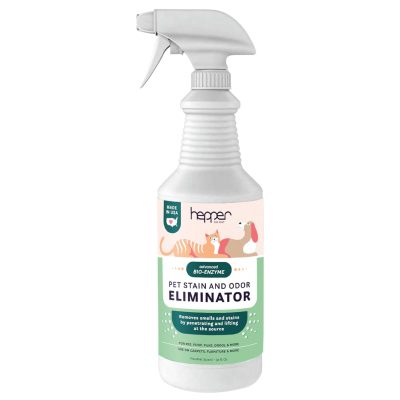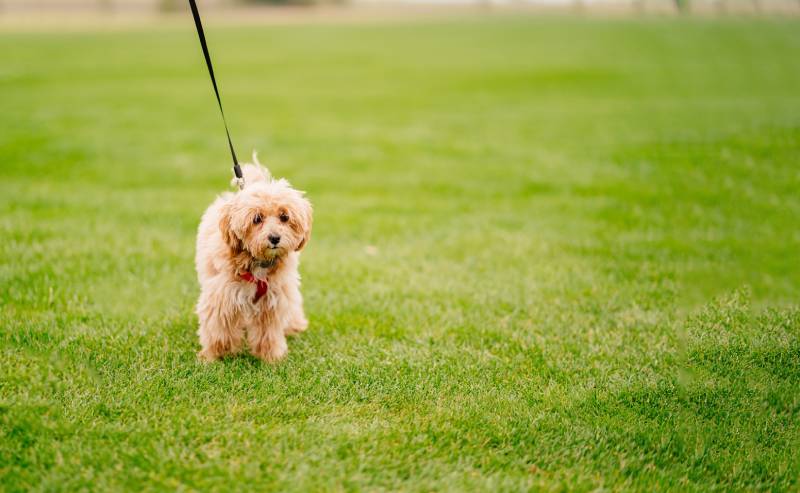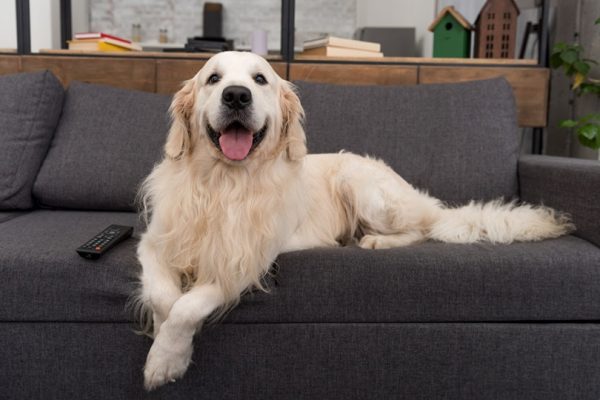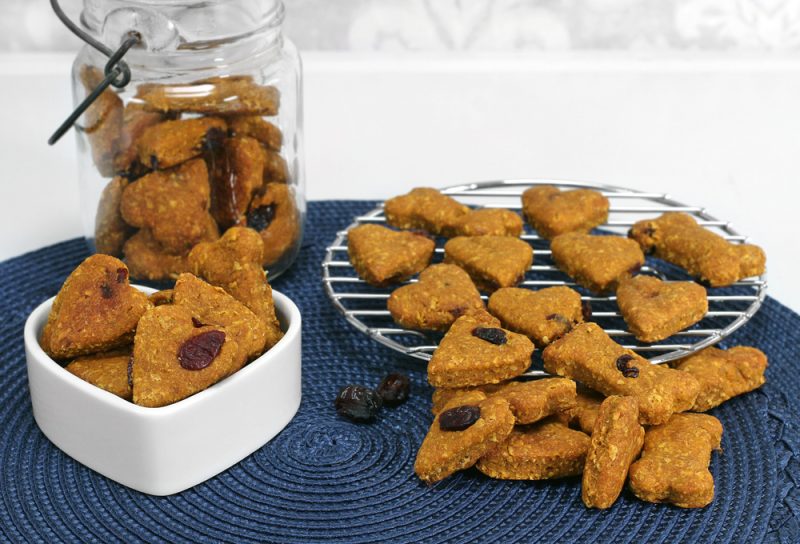In this article
Potty training can begin as soon as you bring your Maltipoo puppy home for the first time, which is usually around 8 to 12 weeks old. Fully potty training a puppy takes a lot of time and patience, as most dogs will not be fully house trained until 3–6 months after training begins.
While you are potty training your Maltipoo, it is essential to know his limits. Generally speaking, a 3-month-old puppy can hold his bladder for a maximum of 3 hours, a 4-month-old can hold it for 4 hours, and so on. Eight hours is the maximum that any dog, potty trained or not, should be expected to hold their bladder. Most puppies will have bowel movements around 20 minutes after a meal.
Are Maltipoos easy to train? Potty training isn’t easy, and the same is true with Maltipoos, so we’ve gathered some helpful tips and tricks for you to examine. To learn how to best potty train your Maltipoo, keep reading below.

The Importance of Effectively Cleaning Up Accidents
Accidents are bound to happen even if you follow all the below tips to the letter. Your little puppy is still learning, after all, and it will take time and patience. In the meantime, you will undoubtedly have a mess or two to clean up. The best way to clean any mess is to be prompt and prepared. If you don’t properly clean and remove the odor, your dog may be able to continue smelling it, leading to them getting confused and thinking that it’s an appropriate place to urinate or poop. An enzyme-based cleaning product, will help to eliminate any remaining odors to prevent your dog returning to the same spot.
Our Favorite Cleaner
Hepper Advanced Bio-Enzyme Pet Stain & Odor Eliminator Spray is our favorite all-purpose cleaner for pet messes. It permanently lifts the very worst stains and odors, making clean-up and accident prevention a breeze. Hepper offers a 100% guarantee, which is a great bonus! Learn more about it here.
| Rating | Image | Product | Details | |
|---|---|---|---|---|
| Best Enzymatic Cleaner |

|
Hepper Advanced Bio-Enzyme Pet Stain & Odor Eliminator Spray |
|
Check Price |
At Dogster, we’ve admired Hepper for many years, and decided to take a controlling ownership interest so that we could benefit from the outstanding products of this cool pet company!
Urine
If the urine is fresh, you should place a thick layer of newspaper over the spot. This will help soak up the urine. You can stand on the newspaper to help speed up the process, but it isn’t necessary. Once the urine is soaked up, use cool water to rinse the area and then blot it with a towel. Next, apply an enzymatic cleaner and follow the instructions to remove the stain.
If you just returned home to a dried urine spot, you may find it a little harder to remove. Thankfully, there are some options for you. Rinse the spot with water and use a wet-dry vacuum to clean it up. If you do not have a wet-dry vacuum, use towels.
It would be best if you did not use a steam cleaner because the heat will permanently lock the odor and stain into the floor. Next, use an enzymatic cleanser to remove the stain and odor. If you prefer a cheaper solution, follow the previous steps for removing urine, and then spread baking soda over the spot and let it sit overnight. After 8 hours, vacuum the site thoroughly. Hopefully, this will remove the odor.
Poop
For poop, scoop whatever solids you can and toss them in a plastic bag. For anything left behind, a mixture of white vinegar and water may help to clean the area. Ideally, this mixture will prevent the stain from turning darker and remove the odor. Once the mess is cleaned up, use a spray bottle of hydrogen peroxide to remove any stains. You can also use enzymatic products to remove poop stains.

How to Potty Train a Maltipoo
1. Know When to Take Your Maltipoo Outside
When your Maltipoo first wakes up in the morning and 20 minutes before they go to bed are two critical times to let them out. This should help prevent most overnight accidents.
If your dog has been confined for any reason, such as sitting in their crate or staying in a playpen, they should be taken outside immediately afterward. Likewise, anytime your Maltipoo signals that they need to go, you should let them out. Signs they are ready for a bathroom break include pacing in circles, behaving skittishly, and barking.

2. Choose a Bathroom Spot
Your Maltipoo will need a special bathroom spot. This will help them learn that this location is where it is okay to go potty and other areas (such as indoors) are not.
When deciding on a spot, consider how accessible it is. For instance, will piled-up snow during the winter prevent them from using their normal spot? This site should also be close to your home and only be used as your Maltipoo’s potty area, nothing else.
3. Keep Your Maltipoo on a Leash
When you take your Maltipoo out for a potty break, they should be on a leash. The leash will show them that it is time to try to potty, not wander around and play.
While your puppy is on a leash, walk them to the bathroom area. Stand directly in the center of it so that they can roam the potty area and choose where they want to go.

4. Have Patience
As tempting as it may be to take your dog out, wait 2 minutes, and then hurry back inside, wait at least 10 minutes to let your Maltipoo do their business outside. While most puppies do not have the strength to hold their bladders too long, some may be too preoccupied with exploring the area to bother trying to potty. Once your puppy settles down, they will be able to use the bathroom.
It can be challenging to wait for your dog to use the bathroom, especially if it is cold or rainy outside. It is advised that you prepare yourself before your dog’s potty breaks. Dress appropriately, bring your phone or another form of entertainment, and patiently wait.
5. Keep an Eye on Your Maltipoo When Indoors
When you are indoors with your Maltipoo, monitor them closely. They should not be allowed to run loose in the home. Since a puppy’s bladder is relatively less capable of holding in urine, you will need to keep a close eye on them until they learn how to hold their bladder better. Gated play areas are a great way to keep your Maltipoo confined while allowing them enough space to roam.

6. Offer Plenty of Praise
Maltipoos respond well to positive reinforcement. Whenever your Maltipoo urinates or defecates in the designated area, reward them. This can be praise, pets, or even yummy treats. Be sure to provide rewards consistently and promptly so that your Maltipoo does not get confused about which behavior is being rewarded. If treats are given long after they go potty, the behavior you want to instill will not be reinforced.
7. Avoid Scolding Your Maltipoo for Accidents
Maltipoos are sensitive dogs. They do not respond well to harsh words, yelling, or punishments. Puppies should not be scolded for going to the bathroom inside. Urinating or defecating inside is entirely accidental and is a primary function of the body. If you punish your Maltipoo for going indoors, they may not associate the feces you find on the floor with their act of doing anything wrong, and it may have no effect on the undesirable behavior you are looking to change.

8. Provide Opportunities to Potty Before and After Walks
Whenever you take your Maltipoo on a walk, visit their potty place first. Allow them to go and wait for a full 10 minutes if needed. If your Maltipoo does not need to go, take a walk with your pup.
When you return, go to the potty spot again and wait at least 10 minutes. While many dogs may use the bathroom in the middle of the walk, it is best to try to redirect your dog to one spot to help reinforce that there is a specific location they should use to go to the bathroom.
9. Know the Difference Between Bathroom Needs and Barking for Attention
Maltipoos are prone to barking often. This can make potty training difficult because excessive barking can also signify that your dog needs to use the bathroom. Therefore, learning other signs of a needed bathroom break is essential (such as whining, pacing, etc.).
Often, puppies will bark at night to get your attention. If you wake up and take them outside every time they bark, you may accidentally teach them that barking is the answer to getting attention from you. The sooner you learn the difference between a bark for attention and a bark for a bathroom break, the better.

10. Keep Your Maltipoo Enclosed in One Area While You’re Away
If you must be away for long periods of the day, keep your Maltipoo enclosed in a specific area. This will give them enough room to play, sleep, and eat, but it will also limit any bathroom accidents to the space you have set for them.
You can try to place down some pee pads, but they may not always use them. It will be difficult for them to understand the purpose of the pads, so don’t expect them to use them consistently.
11. Keep Any Excitement Outdoors
While your Maltipoo is young, it is vital to keep playtime outdoors. Very young puppies have a harder time controlling their bladder, so when there are moments of excitement, they may have a potty accident. Any strong emotion, whether joy or stress, may cause them to urinate.
This phase will pass as they get older. But in the meantime, try to keep playtime outside. Likewise, take your puppy to their potty spot before any playtime. Young puppies should not be picked up, as the excitement of being picked up may cause them to have an accident.

12. Gradually Extend the Time Between Potty Breaks
As your Maltipoo grows older, they will gain more control over their bladder and bowel movements. Gradually increase the amount of time between bathroom breaks so that they can start experiencing longer periods without going potty. This will encourage them to try holding their bladder for longer timeframes, meaning that you won’t have to take them out as often.

Conclusion
Potty training a Maltipoo can be a stressful time for your new puppy. Thankfully, Maltipoos are intelligent and eager to please, so training them is not too challenging. The most important tip to remember is that your puppy is doing his best to learn. Remember to be patient and enjoy the cute puppy moments. They will be over before you know it!
- Related Read: How to Potty Train a Maltese
Featured Image Credit: Rob Hainer, Shutterstock



















